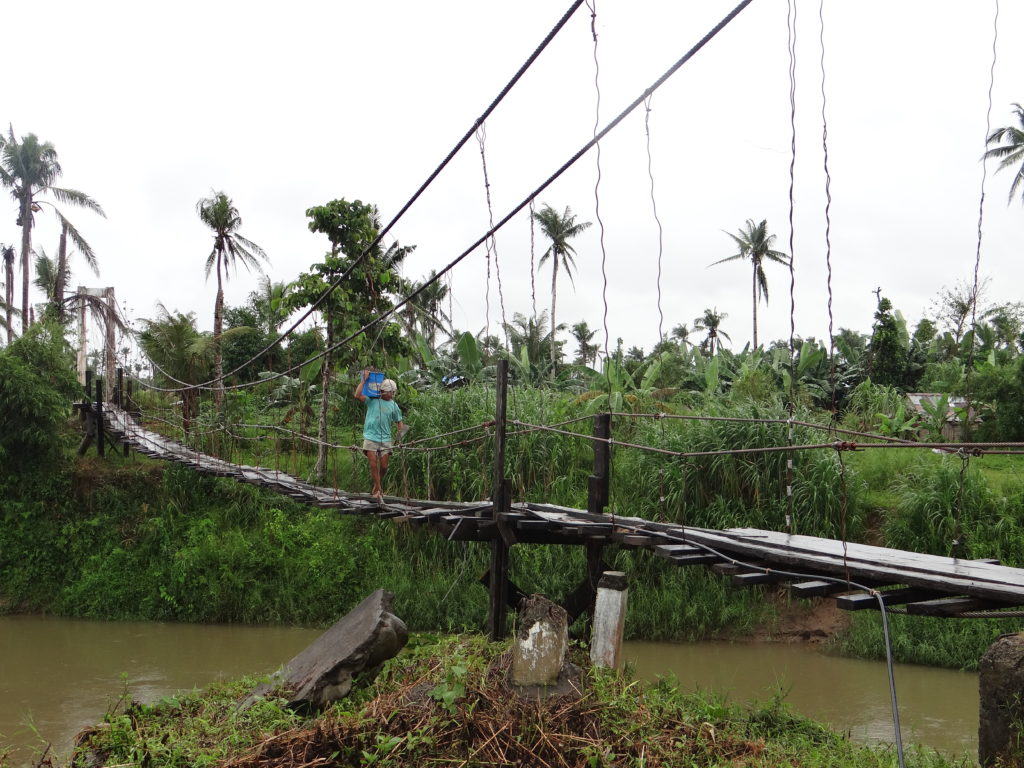This post was written by Melanie Pipkin Kozel, a member of the American Red Cross media team.
After nearly three years with the American Red Cross, I have been sent on my first big deployment to the Philippines to document how the Red Cross is helping those affected by last year’s Typhoon Haiyan. As I prepared for this international trip, I got my shots, stocked up on bug spray and prepared for a week that would be far outside my normal office duties of scheduling and staffing national media interviews and managing communications projects.
Travel through the island of Leyte via Melanie’s 60-second GoPro video >>
Little did I know that my first day on the job in Tacloban would involve crossing The Bridge. I had read about The Bridge in previous reports: it was a precarious, one person across (maybe two if you turned sideways) wood and rope bridge that is the lifeline between the Barangay Balud (barangay means village in the Philippines) and the mainland. After a short, yet bumpy, car ride through lush tropical scenery, we arrived at the bridge to speak to the barangay council, which is basically the village’s leadership or the equivalent of a city council, about the importance of repairing and fortifying this bridge.
We started to cross the bridge like typical Americans, taking selfies and photos that we could post to show off our adventure. Then things got real. The bridge is technically three panels of plywood across; however, only the middle one is fortified, so stepping to the right or left could mean potentially having your foot fall through — dangling above the quickly moving river below. And even that middle plank swayed as several people made their way across, and we soon realized that we needed to hold onto the shoulder height rope in order to maintain balance. We quickly put the cameras away to focus on our safety.
Once across the bridge, we learned just how vital this structure really is. People need to cross the bridge to get to the store. Sick kids and pregnant women have to traverse the bridge to seek medical care. I could only imagine crossing that bridge while having contractions!
During the typhoon, it was washed away by the rising river water, which cut off access to critical relief supplies like food and water. Men from the village had to climb across the bridge, holding onto what was left of the rope, in order to get to town. Red Cross teams helped restore the bridge so they could deliver tarps, shelter tools, and cash after the typhoon, but it was never a permanent fix. The Red Cross is now working with local partners to build a secure bridge and foundation, so that even a motorbike will be able to cross in and out of Balud far into the future.
As my informal initiation into life in the field, it was eye opening to cross The Bridge to not only see what the people in this village experienced during the storm, but to also see how far our staff and volunteers will go to reach those in need. And from here on out, I’ll make sure to always test my footing before even thinking about taking my next selfie.
To learn more about what the Red Cross is doing to help those affected by Typhoon Haiyan, please visit redcross.org/haiyan.


